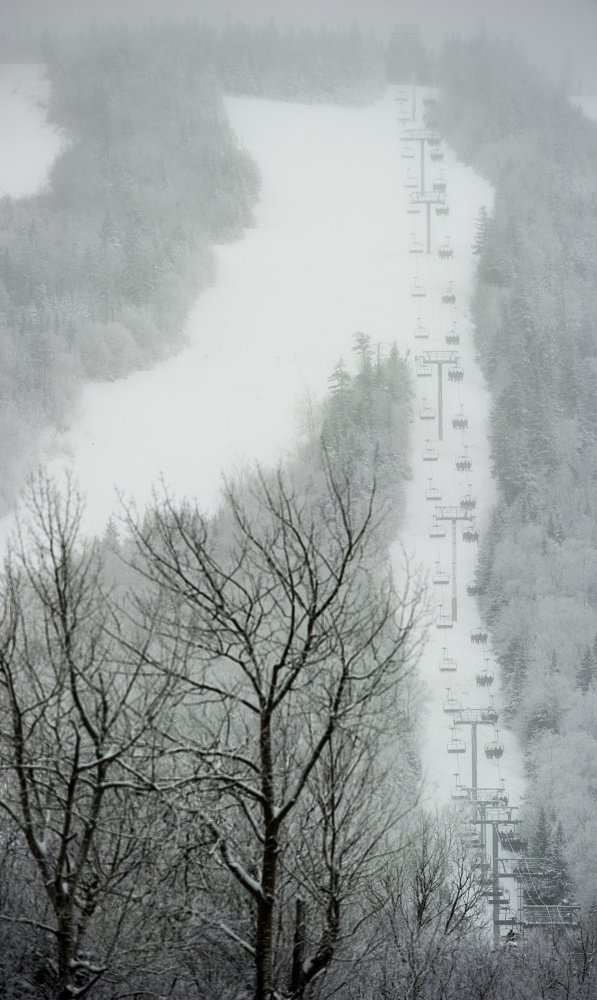I am a skier. I am a “Sugarloafer.” And I’ve worked with individuals with autism at Spurwink Services for nearly 30 years.
Today in Maine, we have about 6,100 families who are dealing with autism and its effects on both the child and family. Unfortunately, despite the growth of Maine’s autism population over the last decade, our state has very few outdoor recreational opportunities that support inclusion for children with autism.
A notable exception is Spurwink on the Slopes, Maine’s only ski program designed specifically for children with autism spectrum disorder. Created in partnership with Sugarloaf’s ski school, the program will begin its sixth year on Jan. 7!
Learning downhill skiing is not an easy endeavor for anyone. When you factor in the challenges facing individuals with autism, such as motor planning difficulties, social engagement struggles and sensory challenges, you might think that ski lessons are a setup for failure, but, in fact, we have seen quite the contrary.
VOLUNTEERS TUNE IN
The rewards and challenges involved in learning to ski come rapid-fire for most new skiing students, not just children with autism spectrum disorder. When on skis, standing can be demanding and falling may happen frequently. The emotional responses can be all over the map, from initial laughter to tears, from fear to exhilaration and from insecurity to confidence.
Physically, skiing builds muscle strength and balance. It can also foster independence. It can be fun, too, especially for the kids who get to enjoy the Moose-calator ride up the mountain.
Many factors contribute to success when teaching or helping someone else learn something new. What’s required is not just expertise with the technical skills associated with the task, but also the ability to provide the right level of support: understanding how the child thinks, how the child feels and how the child learns.
And this depth of support really has been key for these children learning to ski. Spurwink on the Slopes provides one-to-one volunteers who know and understand children with autism. The volunteers come from backgrounds that include personal and/or professional experience in the field, such as occupational therapy, special education, social work, speech and language and direct support. They get it!
Secondly, a supportive environment is critical, and my hat goes off to those from Sugarloaf who have embraced the idea of this program from the beginning. Six years ago, four children participated; last year, 33 different children, ages 4 to 14, took part, filling 69 lesson slots.
Spurwink has provided both formal and informal education about autism to Sugarloaf staff, which has helped, but the enthusiasm of coaches and their delight at working with children, all children, are largely what has sparked the growth of the program. From administration to program staff to the individual ski coaches, everyone has contributed to Sugarloaf becoming an inclusive place.
KNOWING WHO THE SKIER IS
Preparation is also critical to the success of the experience. Spurwink obtains information about a child before their lesson from a person who knows the child best, usually a parent. We ask about their child’s motor planning skills, how they interact with others, how they learn best, what their sensory challenges are, what they think is the most important thing that volunteers and ski coaches know about their child, and what they hope their child will get out of the experience.
In addition, Spurwink sends all children a social story in the mail before their lesson. A social story is a guide, with pictures and writing, that predicts what will happen in various situations. In this case, the story shows children what to expect from the moment they arrive in the parking lot, to the bus ride up the hill, entering ski school, being fitted for gear and what happens on the hill.
When kids learn to ski, some stay on the hill for the entire lesson, while others go in after only one run. Some have difficulty separating from parents, while others barely turn to wave goodbye. Some have really good balance, while others fall a lot. Some pick up the skills quickly, while others try over and over again.
One thing is true: Whether a child has a disability or not, they are all different.
And when on the hill, they are all just children learning to ski. And that is the goal of Spurwink on the Slopes: to be truly inclusive.
Copy the Story LinkSend questions/comments to the editors.



Success. Please wait for the page to reload. If the page does not reload within 5 seconds, please refresh the page.
Enter your email and password to access comments.
Hi, to comment on stories you must . This profile is in addition to your subscription and website login.
Already have a commenting profile? .
Invalid username/password.
Please check your email to confirm and complete your registration.
Only subscribers are eligible to post comments. Please subscribe or login first for digital access. Here’s why.
Use the form below to reset your password. When you've submitted your account email, we will send an email with a reset code.